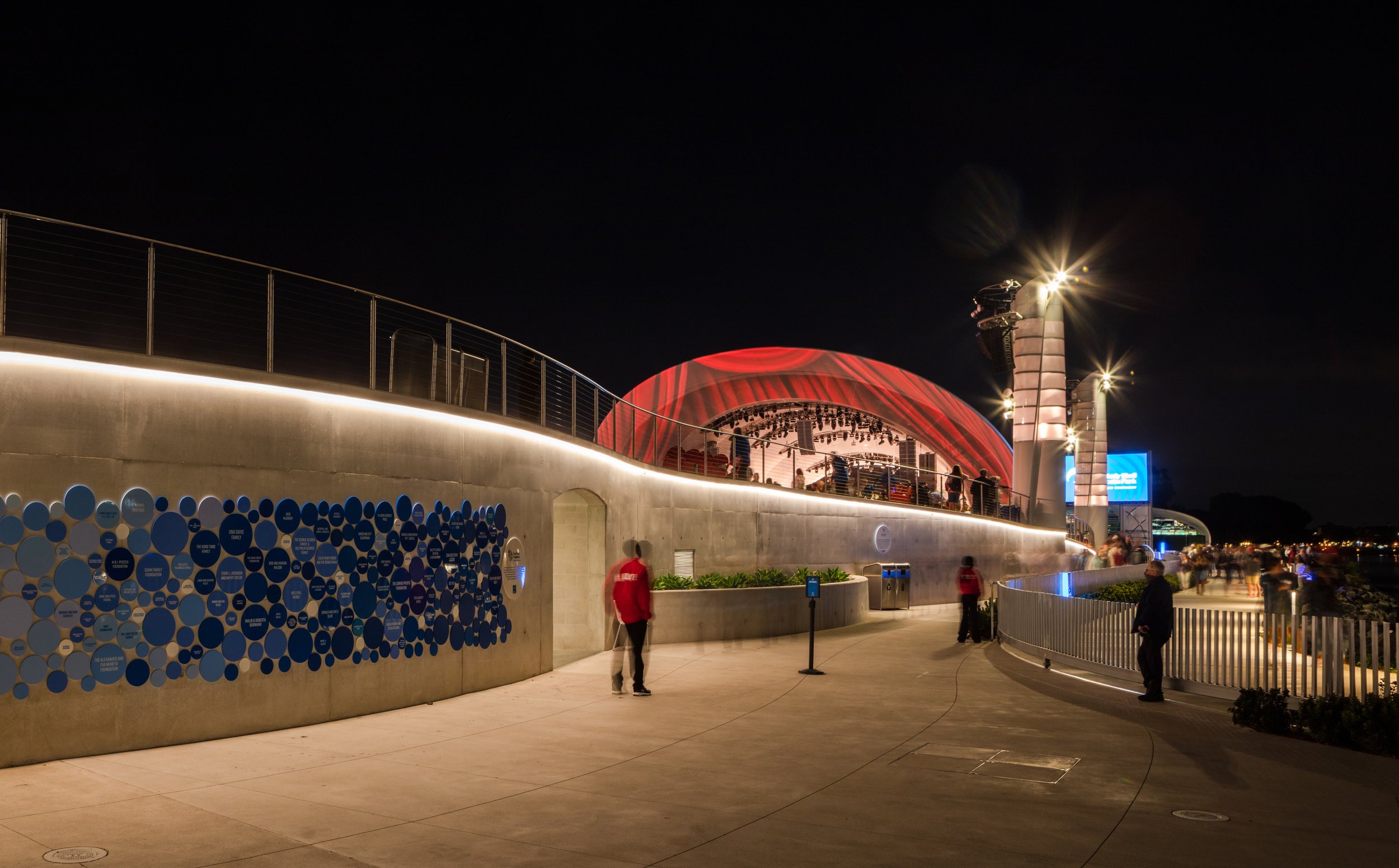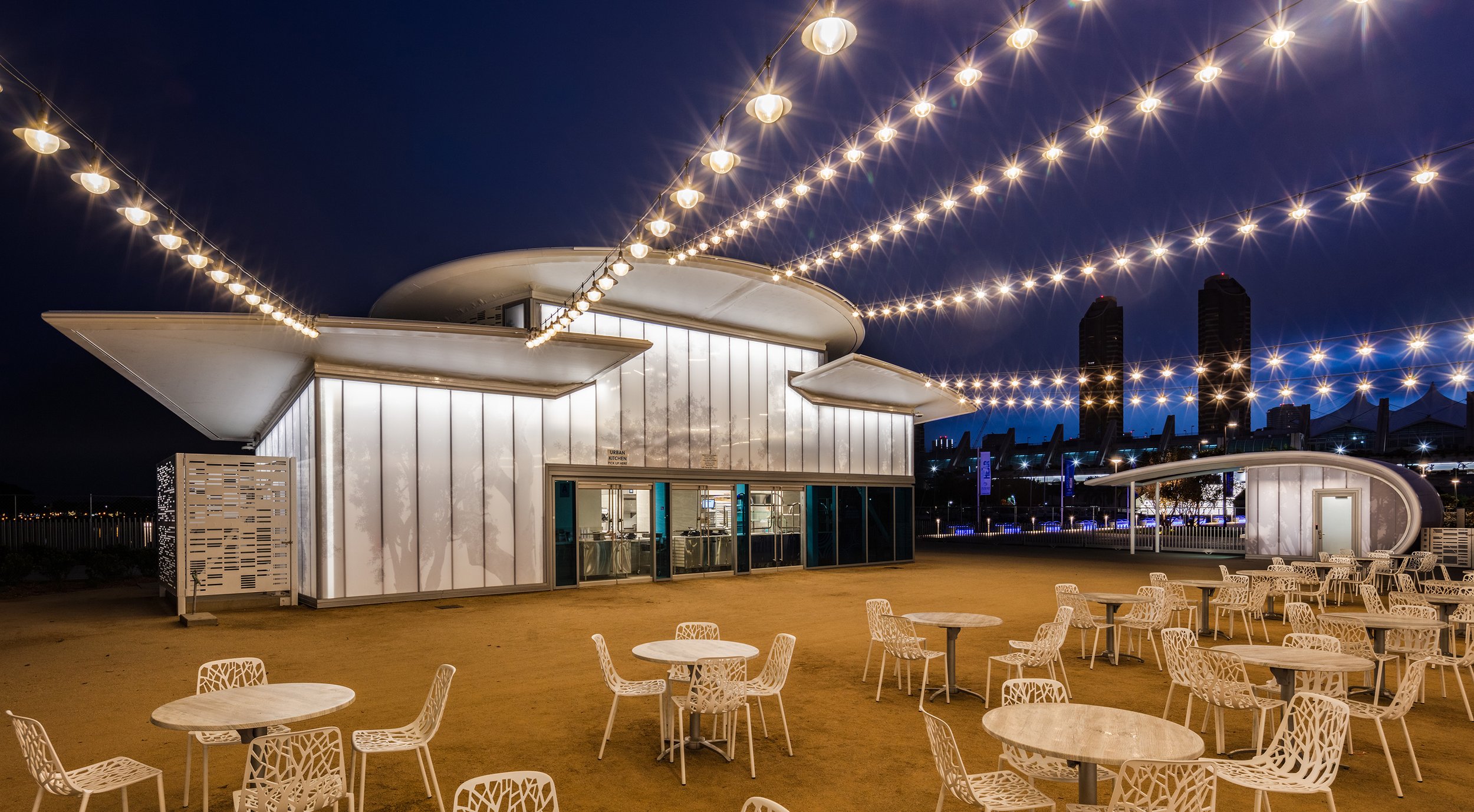Location: San Diego
Architect: Tucker Sadler
Installer/Contractor: Primary Glazing
System: UniQuad® Translucent Wall Systems
Square Feet: Approx. 5,500 sq. ft.
Photos by Darren Bradley
The Rady Shell at Jacobs Park
The Rady Shell at Jacobs Park is more than just a stage for the San Diego Symphony and its many fans. It is the realization of a long-held dream for a permanent outdoor venue where local music lovers and travelers can come together to enjoy all kinds of melodic sights and sounds. With downtown San Diego on one side and the bay on the other, the revitalized Rady Shell blends the city’s urban beat with the bay’s natural rhythms to create a masterful composition of art and architecture. The influence of the park’s natural surroundings on the venue’s design - from the dramatic shell-shaped stage to the gentle wavelike pavilions - is one of many unique elements that make the San Diego Symphony’s first and only permanent outdoor performance center a one-of-a-kind musical experience.
A TREAT FOR THE EYES AND THE EARS... AND MOUTH
In addition to enhancing the Rady Shell’s staging and seating areas, a large focus was placed on expanding the park’s public amenities. This included the construction of a beautiful new ticket booth and two coordinating concessions buildings where a variety of food options are prepared and served onsite. Concertgoers can now enjoy a delectable meal prepared by some of San Diego’s most recognizable chefs and eateries, such as “Top Chef” star Richard Blais, Lola 55, Biga, Urban Kitchen Group, and Kitchens for Good. These additions elevate the symphony experience while their unique facades complement the venue’s artistry and pay homage to the bay’s natural environment.
It was important to project designers at Tucker Sadler that park and concert-goers utilizing these new structures still feel surrounded by nature. To conserve that feeling and commemorate the trees removed from the site during construction, designers photographed the trees; in collaboration with Kingspan Light & Air, transformed those photos into large graphics. Those graphics were then applied to the ticket booth and concessions buildings’ translucent exteriors.
“You are actually looking at the trees on the building that used to be in the park. You are still sitting in between those trees, and it’s a kind of celebration of what was there before, but in a new modern expression,” says Sal Villanueva, the project’s architect.





























